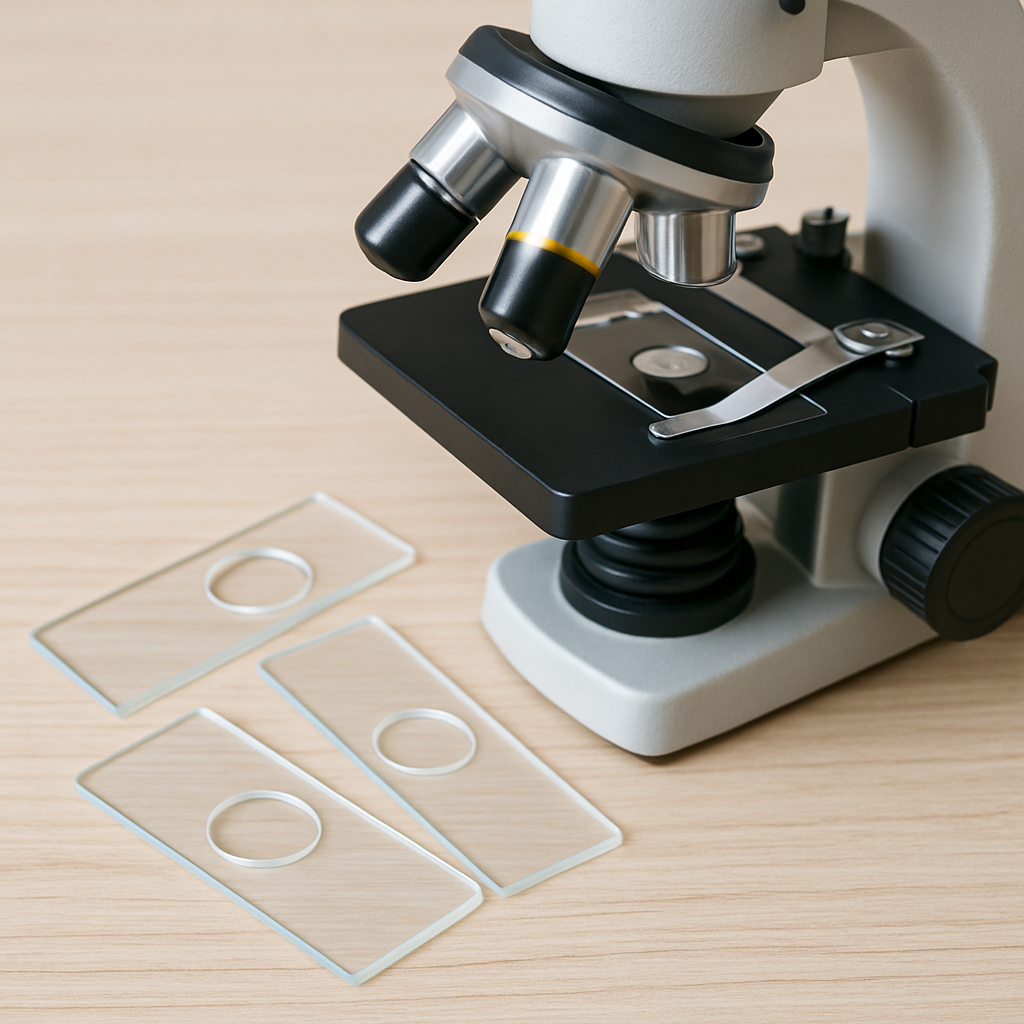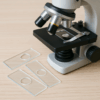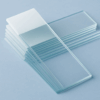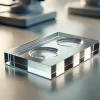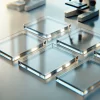Microscopy has revolutionized our understanding of the microscopic world, enabling scientists, researchers, and educators to observe and analyse specimens with unmatched precision. The ability to examine the minute details of cells, microorganisms, and chemical reactions has opened doors to advancements in various fields, from medical diagnostics to environmental science. Within the wide range of tools used in microscopy, cavity slides have become indispensable, offering a specialized design that allows for clear and accurate observations of liquid samples, live organisms, and specimens that require extra space or a controlled environment.
Whether you’re working in a biology lab, conducting medical research, or performing educational demonstrations, cavity slides are crucial for providing the necessary medium for your samples. In this blog, we’ll dive into the key features and benefits of cavity slides, explore their diverse applications, and provide guidance on how to select the right one for your specific microscopy needs, ensuring you make an informed choice every time.
Understanding Cavity Slides
Cavity slides, also known as concave slides, are specialized microscope slides featuring one or more depressions or wells. These cavities are designed to hold liquid specimens, living organisms, or thicker samples that might otherwise be compressed under a standard flat slide. The design ensures that the specimen remains suspended in a medium, facilitating better observation without distortion.
Key Features of Cavity Slides
- Material Composition: Typically made from optical-quality glass, such as soda-lime or borosilicate, cavity slides offer excellent clarity and durability. Some variants are crafted from fused quartz, providing enhanced ultraviolet transparency, which is beneficial in fluorescence microscopy.
- Cavity Design: The central feature of these slides is the concave depression. The depth and diameter of the cavity can vary, with common dimensions being around 13mm in diameter and 0.2-0.4mm in depth. This design accommodates various specimen types, from pond water samples to small chemical reactions.
- Edge Finishing: Quality cavity slides often have ground edges and slightly clipped corners. This not only ensures user safety by reducing the risk of cuts but also facilitates easier handling during slide preparation and examination.
- Pre-cleaned and Ready to Use: Many cavity slides come pre-cleaned, ensuring that they are free from contaminants and ready for immediate use. This feature is particularly beneficial in clinical and educational settings where time and accuracy are paramount.
Applications of Cavity Slides
Cavity slides are versatile tools used across various scientific disciplines:
- Biological Studies: Ideal for observing live microorganisms, such as protozoa or algae, in their natural aquatic environments. The cavity holds the liquid medium, allowing organisms to move freely, which is crucial for behavioral studies.
- Chemical Reactions: In chemistry labs, cavity slides can serve as miniature reaction chambers. Small volumes of reactants can be mixed within the cavity, facilitating observation of reaction dynamics under a microscope.
- Educational Demonstrations: Their ease of use makes cavity slides perfect for classroom settings. Students can observe live specimens or simple reactions, enhancing their understanding of microscopic processes.
- Clinical Diagnostics: In medical laboratories, cavity slides assist in examining bodily fluids, such as blood or sputum, providing insights into patient health conditions.
Choosing the Right Cavity Slide
Selecting the appropriate cavity slide depends on several factors:
- Number of Cavities: Slides are available with single or multiple cavities. A single cavity slide is suitable for observing one specimen, while multiple cavities allow for comparative studies or simultaneous observations of different samples.
- Cavity Dimensions: Depending on the specimen size and the volume of the medium required, choose a slide with appropriate cavity depth and diameter. Deeper cavities are beneficial for larger specimens or when a significant volume of liquid is needed.
- Material Quality: Ensure the slide is made from high-quality glass to prevent distortion and breakage. For specialized applications, such as UV microscopy, opt for slides made from fused quartz.
- Edge and Surface Finish: Slides with ground edges and smooth surfaces reduce the risk of injury and ensure better specimen adherence. Some slides also feature frosted ends for easy labelling.
- Budget Considerations: While quality is paramount, it’s essential to consider the cavity slide price, especially when purchasing in bulk for educational or institutional purposes. Balancing cost with quality ensures optimal resource utilization.
Maintenance and Handling Tips
To maximize the longevity and effectiveness of your cavity glass slides, follow these essential tips for cleaning, storing, and handling:
- Cleaning: After use, clean slides promptly using appropriate solvents to remove residues. Avoid abrasive materials that can scratch the glass surface.
- Storage: Store slides in a dust-free environment, preferably in slide boxes or holders, to prevent contamination and physical damage.
- Handling: Always handle slides by the edges to avoid fingerprints on the viewing area. Wearing gloves can further minimize contamination risks.
By following these simple maintenance and handling tips, you can ensure that your cavity slides remain in optimal condition for precise and reliable results.
Conclusion
Cavity slides are indispensable tools in the realm of microscopy, offering unique advantages for observing liquid specimens, live organisms, and facilitating small-scale reactions. Their specialized design enhances the clarity and quality of observations, making them a staple in both educational and professional laboratories. When selecting a cavity slide, consider factors like cavity dimensions, material quality, and specific application needs to ensure optimal results.
For a range of high-quality cavity slides suitable for various applications, explore the offerings at Blue Star Slides. Known for their precision and commitment to quality, Blue Star Slides provides a variety of cavity slides, including single cavity and multi-cavity options, crafted from premium materials to ensure clarity and durability. Along with cavity slides, they also offer a wide selection of microscope slides, such as frosted, plain, and VDRL slides, as well as cover glasses. These products are designed to meet the needs of both routine laboratory work and specialized research, supporting accurate and reliable observations.
With their focus on precision and quality, Blue Star Slides ensures that you have the right tools for every microscopy application.

